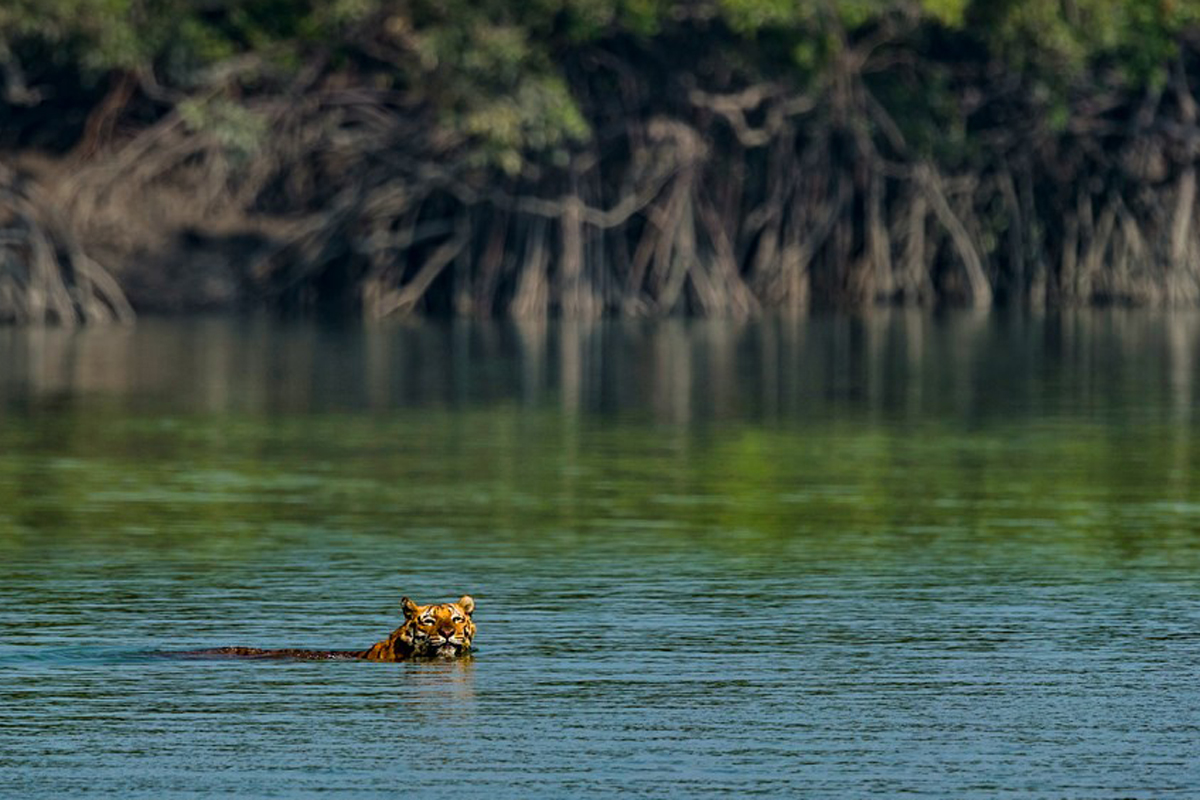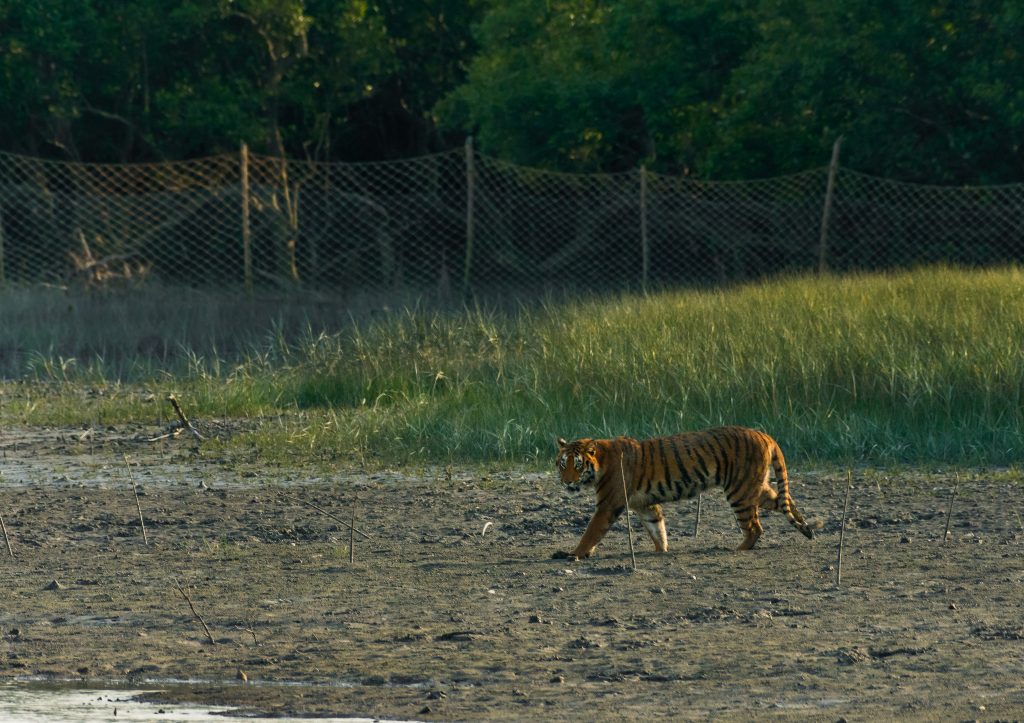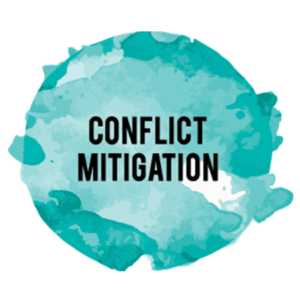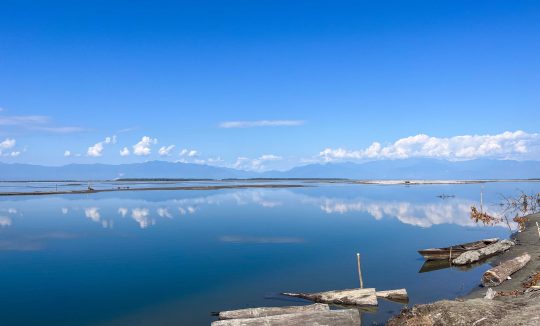
Project Info
Project Description
The Sundarbans Delta falls in the state of West Bengal in eastern India and spreads over to Southwest Bangladesh. It consists of a vast landscape of numerous islands found amidst a network of rivulets, streams and estuaries branching out from the Ganges, Brahmaputra and Meghna rivers. The Sundarbans happens to be the only mangrove forest in the world with the tiger in its indigenous faunal assemblage, where it thrives alongside 46 other mammals and numerous other animal and plant species. The Sundarbans because of its impressive constitution of various species of trees and animals are a notified UNESCO World Heritage site. Not just that, it is also a Biosphere Reserve, Tiger Conservation Reserve and a Ramsar site.
The Sundarbans delta constitutes one of the largest available tiger habitats in the subcontinent and is a Level I Tiger Conservation Unit (TCU). 60% of the vast landmass of the Sundarbans fall on the Bangladesh side while 40% falls on the Indian side with. Even though this is one of the main habitats for tigers, their density on both the Indian and Bangladesh side is relatively low with the Indian side having around 62-96 tigers and Bangladesh having around 84-130 tigers. Both the countries face similar problems of poaching of tiger and its prey species, in the Sundarbans delta. Apart from this, there are also high frequencies of human tiger conflicts in the Sundarbans primarily due to humans venturing into the tiger’s domains for reasons such as extraction of forest resources. Additionally, in recent years, rise in sea levels due to global warming has also been identified as a major threat to this landscape and the tigers therein with cascading impacts on the human population that also shares space with the wild flora and fauna. Thus, that human-wildlife conflict specifically with tigers and crocodiles are one biggest threats to the Sundarbans, followed by climate change, salinity changes, shrimp seed collection by local people, other livelihood pressures on natural resources, and pollution.

Bengal tiger in Sundarban mangroves (India) with nylon net fencing in the backdrop | Photograph by Satyaki Naha
Wildlife Trust of India in partnership with the Wild Team & Jahangirnagar University, Bangladesh, Lokamata Rani Rashmoni Mission (LRRM), KFW, International Union for Conservation of Nature (IUCN) and the West Bengal Forest Department has launched the Sundarbans Project in numerous phases. The main objective of the project is testing out various initiatives to reduce human-tiger conflict, reduce people’s dependence on forests and spread awareness in the Sundarbans across India and Bangladesh, such that successful measures can be replicated across a larger landscape in a subsequent extension of this project.
The current Phase of the project, in the Sundarban Delta of India and Bangladesh aims at expanding and building up on the work initiated in the previous phase. The project is being implemented in the select sixhigh conflict prone villages in the Sundarban delta region.
In the current phase, the proponents attempt to amplify the work already initiated in the previous phase, as well as extend learning and sharing across borders by, for the first time, replicating initiatives that have proven success on one side of the border, on the other side. Towards this, two Sundarban Education Centres are being developed on the Indian side as they have been working successfully on the Bangladesh side.

Net Fencing in Sundarbans Delta | Photograph by Tamajit Das
The Sundarban Tiger Project aims at developing infrastructure to support the government for managing human-tiger conflicts as well as develop select village communities at various levels along with also addressing three issues – losses incurred due to human-tiger conflicts, poverty of fringe village dwellers as well as the emergent climate change related crises. It also aims to enhance the livelihoods of nearly 500 beneficiaries in the three villages. It also will provide improved (low-emission low-fuelwood consumption) cook stoves to around 750 needy households in the project villages, thereby also saving fuel biomass and reducing health risks, especially to women. Around 300 or more beneficiaries, heavily dependent on forest resources will also be provided skill development training to ensure sustainable forest resource collection as well as reduced vulnerability to tiger attacks. On the Indian side, local communities have opted to erect a net barrier stretch to protect their villages.
The entire project has been designed in consultation with important stakeholders in the project regions and also aims at following a consultative process for implementation, especially where community related activities are concerned. The project will follow through with more phases to achieve further goals.
You can find the “Environmental and Social Management Plan” of the project prepared in consultation with the stakeholders here
PARTNERS: German Corporation, IUCN, KFW
For more information about the project : Dr. Abhishek Ghoshal











